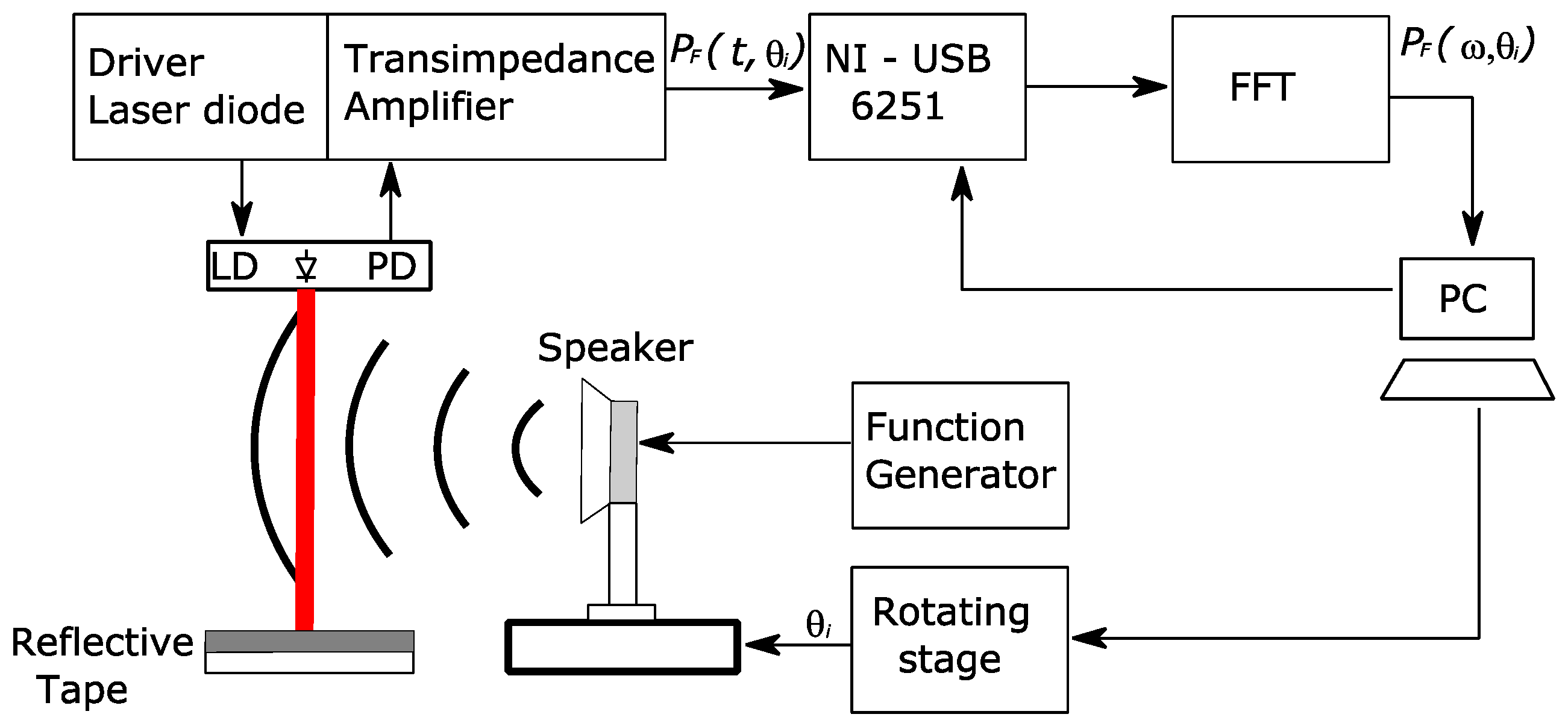Characterization of Acoustic Sources by Optical Feedback Interferometry †
Abstract
:1. Introduction
2. Experimental Setup
3. Results
4. Conclusions
Acknowledgments
Conflicts of Interest
References
- Bertling, K.; Perchoux, J.; Taimre, T.; Malkin, R.; Robert, D.; Rakić, A.D.; Bosch, T. Imaging of acoustic fields using optical feedback interferometry. Opt. Express 2014, 22, 30346–30356. [Google Scholar] [CrossRef] [PubMed]
- Taimre, T.; Nikolić, M.; Bertling, K.; Lim, Y.L.; Bosch, T.; Rakić, A.D. Laser feedback interferometry: A tutorial on the self-mixing effect for coherent sensing. Adv. Opt. Photonics 2015, 7, 570–631. [Google Scholar] [CrossRef]
- Malkin, R.; Todd, T.; Robert, D. A simple method for quantitative imaging of 2D acoustic fields using refracto-vibrometry. J. Sound Vib. 2014, 333, 4473–4482. [Google Scholar] [CrossRef]
- Nakamura, K.; Hirayama, M.; Ueha, S. Measurements of air-borne ultrasound by detecting the modulation in optical refractive index of air. In Proceedings of the 2002 IEEE Ultrasonics Symposium, Munich, Germany, 8–11 October 2002; Volume 1, pp. 609–612. [Google Scholar]
- Hargather, M.J.; Settles, G.S.; Madalis, M.J. Schlieren imaging of loud sounds and weak shock waves in air near the limit of visibility. Shock Waves 2010, 20, 9–17. [Google Scholar] [CrossRef]




Publisher’s Note: MDPI stays neutral with regard to jurisdictional claims in published maps and institutional affiliations. |
© 2017 by the authors. Licensee MDPI, Basel, Switzerland. This article is an open access article distributed under the terms and conditions of the Creative Commons Attribution (CC BY) license (https://creativecommons.org/licenses/by/4.0/).
Share and Cite
Urgiles, F.; Perchoux, J.; Bosch, T. Characterization of Acoustic Sources by Optical Feedback Interferometry. Proceedings 2017, 1, 348. https://doi.org/10.3390/proceedings1040348
Urgiles F, Perchoux J, Bosch T. Characterization of Acoustic Sources by Optical Feedback Interferometry. Proceedings. 2017; 1(4):348. https://doi.org/10.3390/proceedings1040348
Chicago/Turabian StyleUrgiles, Fernando, Julien Perchoux, and Thierry Bosch. 2017. "Characterization of Acoustic Sources by Optical Feedback Interferometry" Proceedings 1, no. 4: 348. https://doi.org/10.3390/proceedings1040348




